Joan Yeguas
The Museu Nacional d’Art de Catalunya’s reserve collection contains works little known to the public and to scholars of art history. One example is Oratory (1525-1618). It is a small wooden oratory (97 x 52 cm) with porphyry and onyx incrustations, and a central panel painting. The work was purchased from the heirs of Matías Muntadas in 1956.
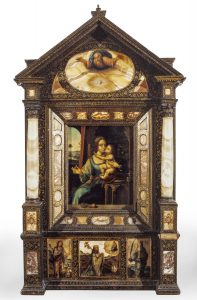
The oratory is in the form of a baroque altarpiece, in the style of the baroque period. Its structure is one of architectural elements in miniature: the central painting is flanked by columns on pedestals, and covered by a triangular pediment painted with the figures of the Eternal Father and the Holy Ghost. Below is the predella, with a painting of Saint Bernard of Clairvaux, accompanied by Saint Mary Magdalene and Saint Elizabeth of Hungary.
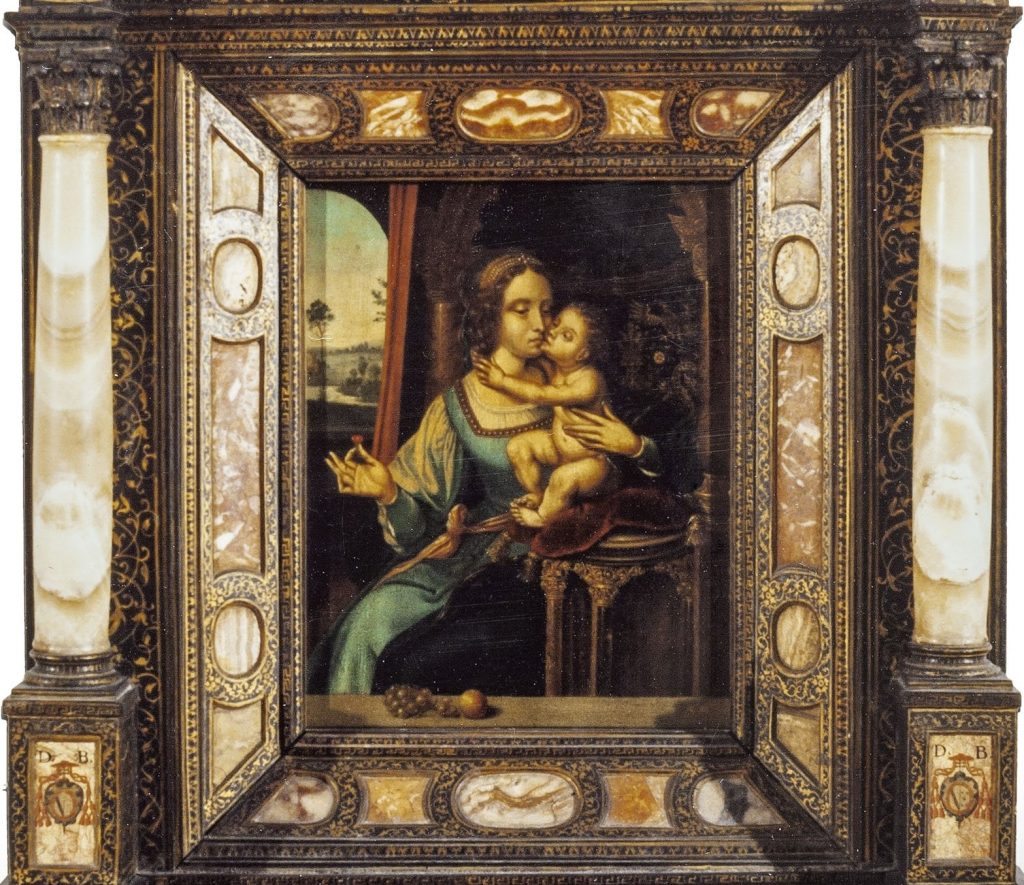
Central painting 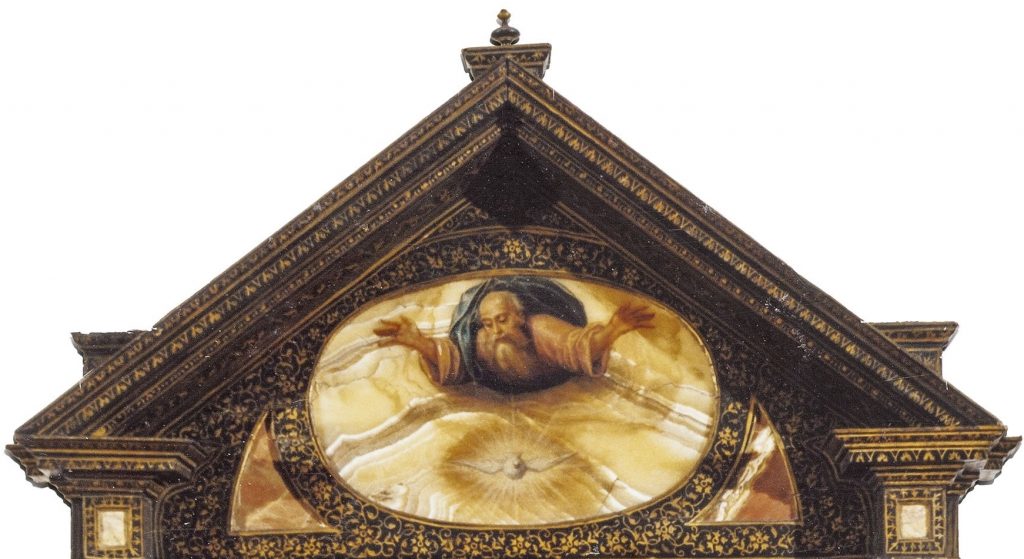
Triangular pediment 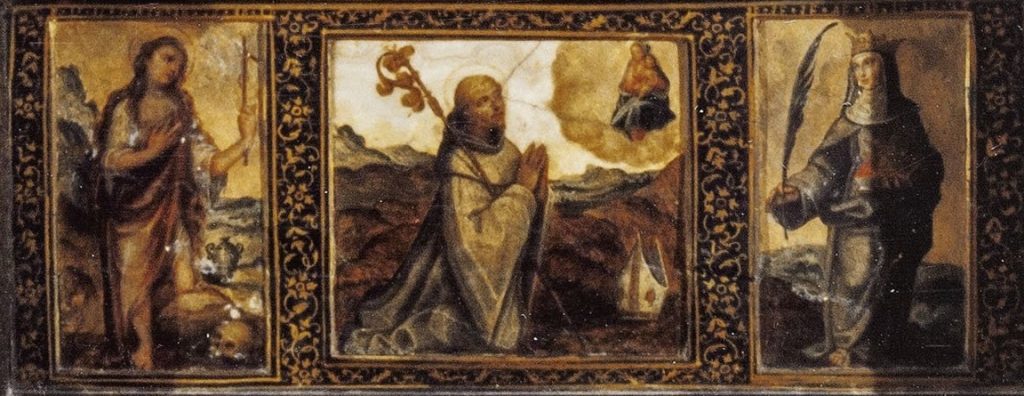
Predella
This painting is done on stones incrusted in the architectural structure. Coats of arms appear on the pedestals of the columns, together with some inscriptions: I. BERNAR / DVS / CARDIALIS / TOLUS, which can be identified with Bernardo de Sandoval y Rojas, cardinal archbishop of Toledo from 23 June 1599 to 7 December 1618, the date of his death. The client’s name is obviously associated with the Saint Bernard depicted on the predella.
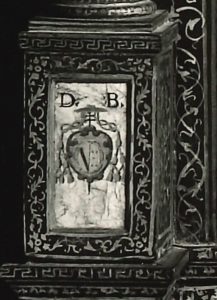
Pedestral with a coat of arms and an inscription
In the centre of this portable oratory there is an oil painting on very thin oak. It is of the Virgin Mary, in three-quarter view; she is holding the Child seated on the arm of the throne as he gives her a kiss. The Virgin holds some cherries in her other hand, and sits on a richly decorated throne. Mary is dressed simply, in a shirt with a tunic over it, and the Child Jesus is completely naked. In the background, through a window, there is a landscape with views of a castle, a river and vegetation. In the foreground, on a parapet, there is a still-life with fruit: a bunch of grapes and an apple, symbols of the wine of the Eucharist and of the Fall of Man, respectively.
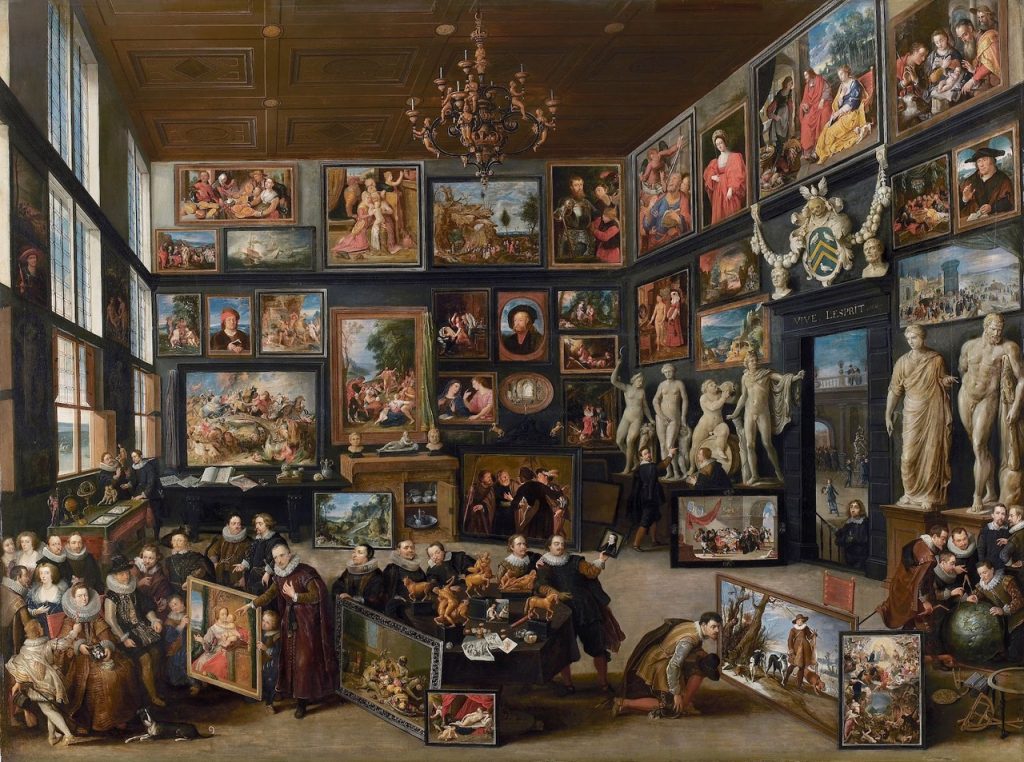
The panel in question is a small-format version of a painting by the Flemish Quentin Metsys, also referred to as Matsys, Massys or Matsijs. The model it is based on is quite a well-known work, and it is often called the Madonna of the Cherries; its present whereabouts are unknown, and it is thought to be lost. It has in fact been associated with the one that appears in the paintings cabinet of Cornelis van der Geest, immortalized in 1628 in a painting by Willem van Haecht (now in the Rubenshuis in Antwerp). The painting is usually dated to the 1520s, in the artist’s mature period, when he painted the Virgin on a more human level, distinct from a more deific and intercessory tone, even though it was a work made for devotion. These changes are thought to reflect the influence of Leonardo da Vinci on Flemish painting, as can also be seen in the work of Joos van Cleve. The strong emotional connection between the Virgin and the Child might have derived from models seen in some Byzantine icons, transmitted through the work of Dirk Bouts, and which Metsys uses in other paintings such as the Virgin Enthroned in the Gemäldegalerie in Berlin, or the Rattier Madonna in the Musée du Louvre.
Several replicas and/or copies of this composition have survived, most of them larger in size. Experts have counted more than a dozen of them (see the catalogue by L. Silver, The Paintings of Quinten Massys with Catalogue Raisonné, Oxford, 1984, pp. 230-231). Of them, we can mention one in the Mauritshuis Royal Picture Gallery in The Hague, on loan from the Rijksmuseum in Amsterdam, measuring 75.4 x 62.9 cm, from the collection of Albertine Agnes (1634-1696), Princess of Orange-Nassau; another one in the John and Mable Ringling Museum of Art, in Sarasota (Florida, USA); one sold at auction by Christie’s on 6 May 2009, measuring 84.5 x 64.8 cm; one auctioned by Sotheby’s New York on 29 January 2015 (not sold), measuring 75.6 x 62.9 cm, from the collection of Baron Northbrook; one sold at auction by Christie’s on 9 July 2015, measuring 76 x 62.7 cm, from the collection of the Count de Franqueville; and one in a private collection (82.5 x 65 cm), attributed to a follower of Metsys.
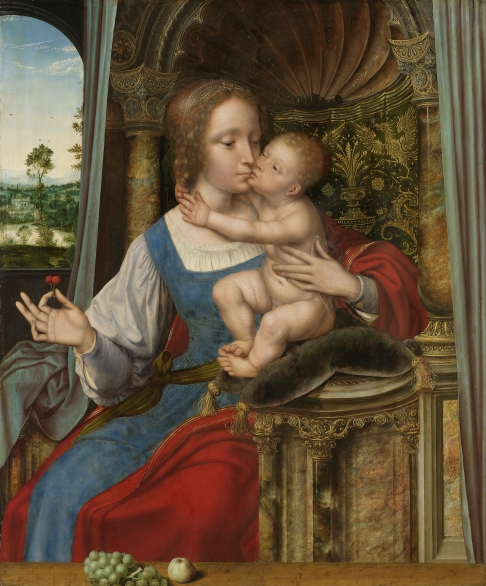
Madonna of the Cherries, Quentin Metsys, 1525-1530. Rijksmuseum 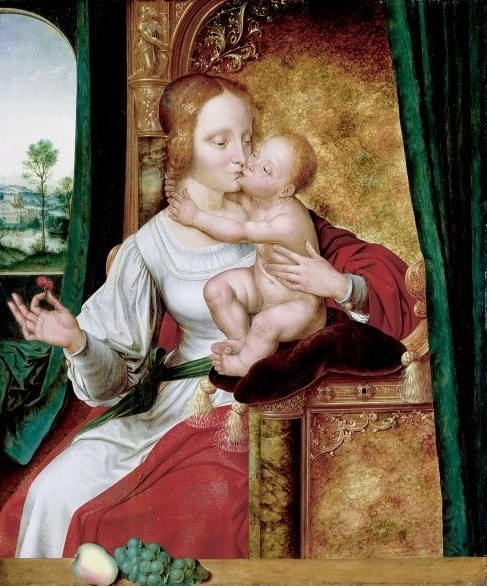
Madonna of the Cherries, 1520. John and Mable Ringling Museum of Art 
Madonna of the Cherries, Quentin Metsys, 1520. Subhastada a Sotheby’s 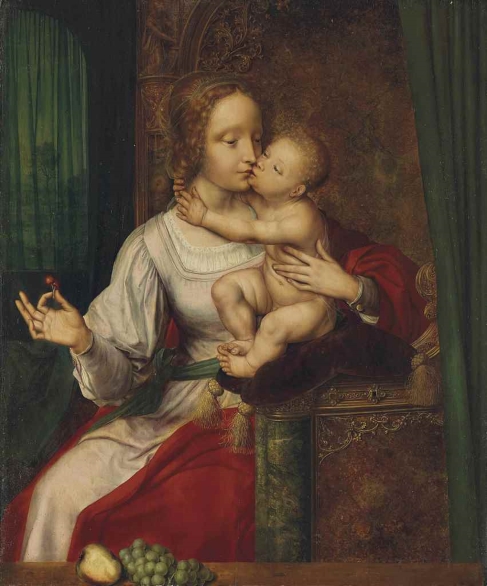
Madonna of the Cherries, Quentin Metsys. Subhastada a Christie’s
The panel in Barcelona must be attributed to a follower of Quentin Metsys. It is one of the many versions and copies made of famous paintings, in the period when this one was created. The model’s success was due either to demand from clients or supply by painting workshops (known of through prints, other copies or directly from the original). And it is also interesting to consider the construction of a portable oratory for private devotion, almost certainly to house, protect and show off a painted panel that Bernardo de Sandoval y Rojas must have held in high esteem.
Related links
New display of Renaissance and Baroque
Art del Renaixement i Barroc







